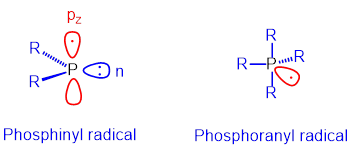Stable Phosphorus Centred Radicals
Radicals are usually observed as rather short-lived intermediates. In main group chemistry it is possible stabilise them to the extent that they can even be isolated in crystalline form. We have begun our investigations into stable phosphorus centred radicals recently; of our particular interest are radicals with potential to be used as spin labels. Spin labels are artificial paramagnetic probes introduced into a system (for example large biomolecules such as membrane proteins) in order to make it ‘visible’ by Electron Paramagnetic Spectroscopy (EPR), which is a particularly sensitive resonance spectroscopy technique. New spin labels with favourable paramagnetic characteristics are extremely desirable since they can improve the capabilities and scope of those established, as well as several newly emerging and rapidly developing magnetic resonance methods, such as DNP (Dynamic Nuclear Polarization, NMR enhancement method), High Field and Pulsed EPR (used in long range distance measurements, and dynamic processes investigations in biomolecules), as well as EPR Imaging (medicinal imaging complementary e.g. to the more familiar NMR imaging – MRI). As the need for new classes of spin labels is growing, our activities will be even more strongly linked to spin label chemistry in the near future.
Phosphinyl radicals have large π-character of their SOMO (Singly Occupied Molecular Orbital) and therefore large hyperfine anisotropy, which makes them highly orientationally sensitive spin labels.
Phosphoranyl radicals can have extremely large hyperfine coupling, which generates huge interest in their development as polarizing agents in Dynamic Nuclear Polarization techniques.
MORE DETAIL on Stable Phosphorus Centred Radicals Research in Kilian group
